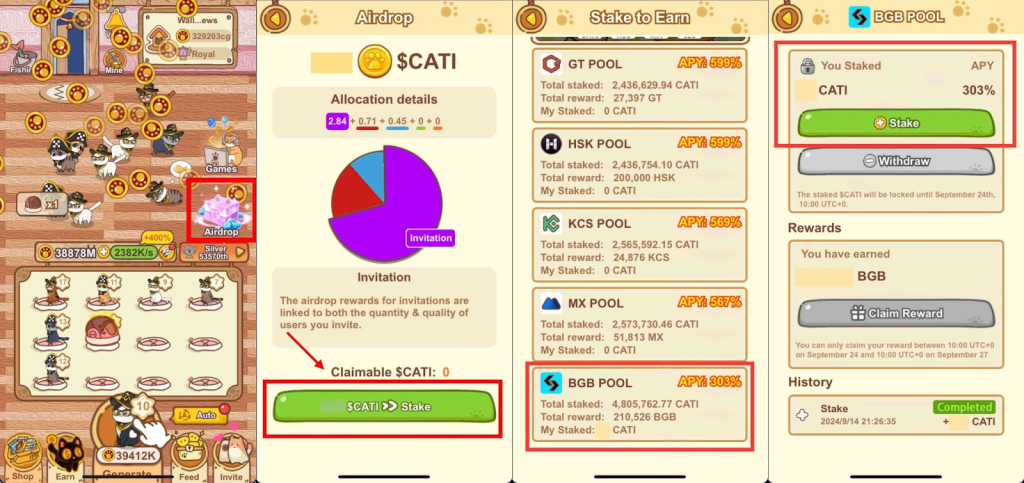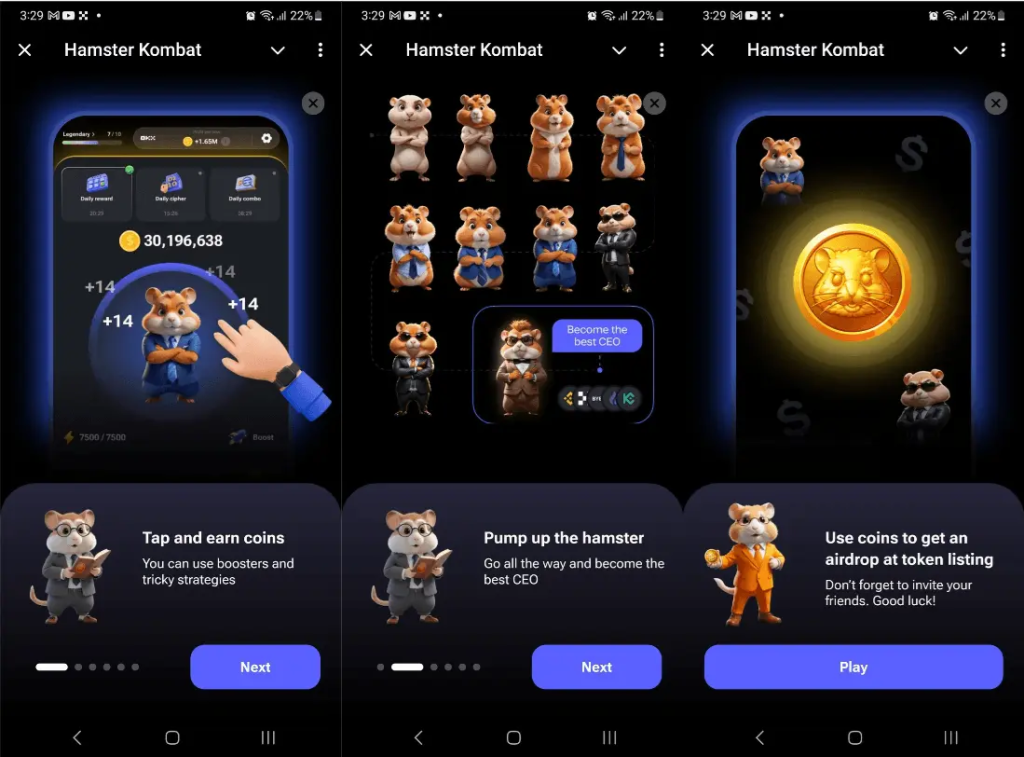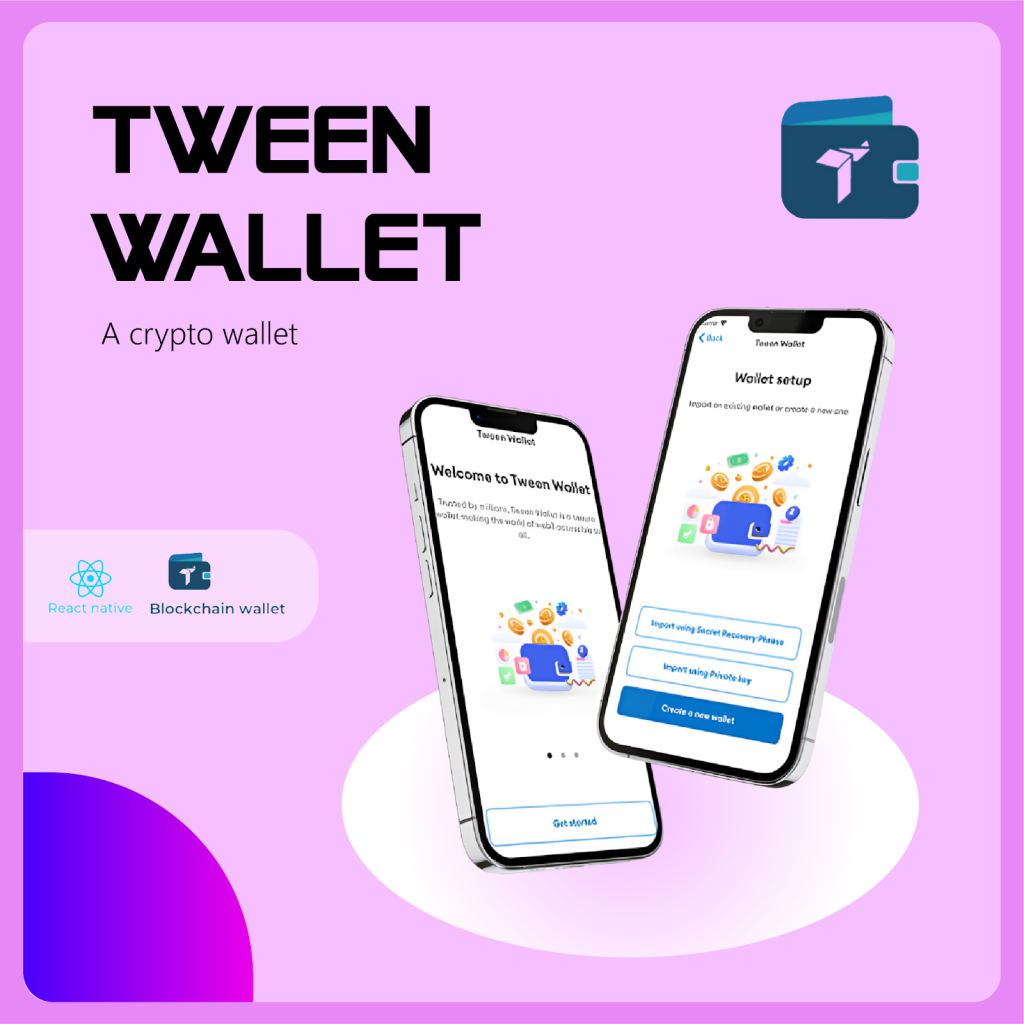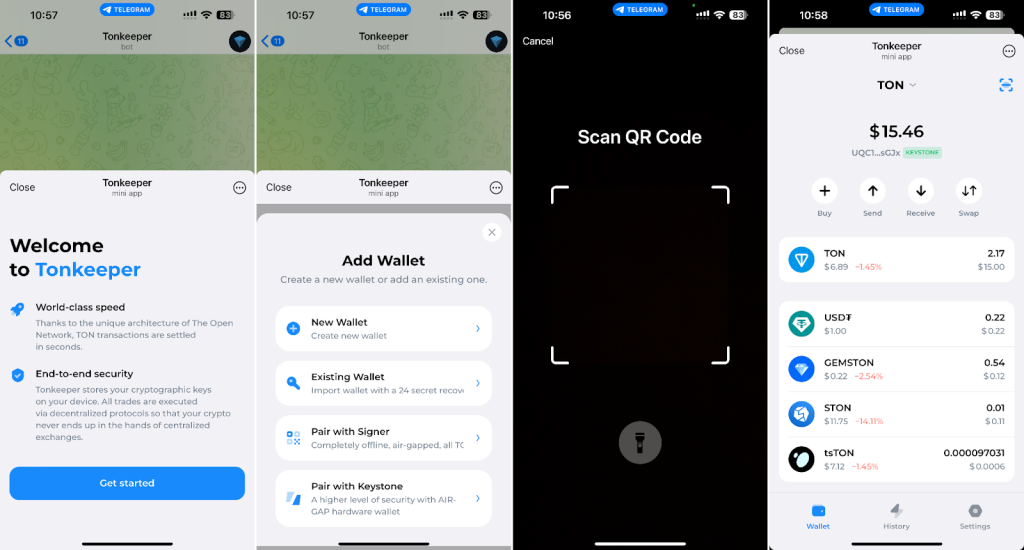User acquisition remains one of the toughest challenges for Web3 projects. Traditional marketing channels are becoming costly and less effective, pushing project leaders to explore new strategies. Web3 MiniApps on Telegram are emerging as a powerful distribution channel that transforms how blockchain projects acquire and engage users. In Singapore, Asia’s leading Web3 hub, these lightweight applications are gaining traction by offering frictionless experiences within Telegram, bridging Web2 convenience with Web3 functionality. This shift is redefining how user acquisition works, making blockchain adoption more accessible without sacrificing security or decentralization.
Why Web3 MiniApps Are Becoming a User Acquisition Channel
Telegram’s scale makes it an unmatched distribution platform, with over 900 million monthly active users worldwide and especially high penetration among Singapore’s tech-savvy population. What began as a messaging app has evolved into a full ecosystem for digital commerce and blockchain interaction.
The real advantage of Telegram apps lies in their ability to remove onboarding friction that has long slowed Web3 adoption. Instead of downloading separate wallets, managing seed phrases, or switching applications, users access blockchain functionality directly inside their everyday chat environment. This dramatically lowers the barrier to entry while keeping the experience familiar.
Equally important are the wallet-native features now embedded in MiniApps. From crypto transfers and NFT interactions to DeFi protocols, these services are integrated seamlessly into Telegram, offering immediate utility without technical hurdles. By abstracting blockchain’s complexity while preserving decentralization, MiniApps deliver a smoother Web3 UX – one that enables projects to scale their communities faster while maintaining the transparency and security that define Web3.
Top 7 MiniApps Gaining Traction
1. Notcoin: Viral Growth and Lessons in Gamified Acquisition
Notcoin stands as one of the most powerful demonstrations of the viral potential behind Web3 MiniApps on Telegram. In less than two months, this simple “tap-to-earn” game drew in over 30 million players, and within a few months, the figure had surged to between 35 and 40 million users. Its success was not accidental: the integration of a referral tree system, combined with an ultra-accessible gameplay loop, transformed the simple act of tapping into a user acquisition engine of unprecedented scale. Users didn’t need to download a separate app or configure a wallet just tap, play, and earn $NOT tokens directly inside Telegram.
The conversion metrics tell an even stronger story. During the first week of its token airdrop on May 16, 2024, 2.7 million of the 35 million players claimed tokens. By August, that number had skyrocketed to 11 million claimants, with active wallets doubling from 4.2 million to 8.5 million, and wallets holding non-zero balances climbing from 3 million to 6 million. These figures prove that Notcoin was not just about fast onboarding, it successfully activated genuine on-chain behavior, a critical ingredient for long-term retention in Web3 ecosystems.
In Singapore, where both Telegram adoption and a crypto-savvy user base are widespread, Notcoin has become a textbook case study of how MiniApps can reach mainstream scale while still preserving a seamless, authentic Web3 experience. For local projects seeking to understand viral acquisition mechanics, Notcoin offers a blueprint for balancing simplicity, virality, and blockchain utility.
2. Catizen: Blending Pet Simulation with DeFi Mechanics

Catizen MiniApp staking pools and play-to-earn mechanics (Source: Catizen)
Catizen illustrates how Web3 MiniApps can move beyond pure entertainment to integrate complex financial layers within familiar social gameplay. At its core, Catizen is a pet simulation app, but behind the playful UX are embedded DeFi features: users can stake tokens, participate in governance, and trade in-game assets directly within Telegram. This seamless layering of financial instruments on top of gamified experiences has proven highly effective for engaging both new and experienced crypto users.
User acquisition is driven by social loops: players share progress, participate in group-based activities, and invite friends to unlock additional rewards. The wallet-native structure ensures that every in-game action is directly tied to real token incentives, creating strong stickiness. While exact user numbers have not been as widely reported as Notcoin or Hamster Kombat, Catizen has seen meaningful adoption across Asia, with Singapore emerging as one of its key markets due to its strong fintech culture and appetite for experimental gaming formats.

Catizen MiniApp monthly users vs subscribers trend 2024–2025 (Source: Catizen Telegram)
For Web3 builders in Singapore, Catizen demonstrates that localization matters: by adapting pet simulation mechanics that resonate in Asian cultures, MiniApps can drive adoption at the intersection of play, community, and finance.
3. Hamster Kombat: Edutainment at Unprecedented Scale

Hamster Kombat tap-to-earn gameplay with character progression and token rewards (Source: Hamster Kombat).
Hamster Kombat pushed the boundaries of MiniApp adoption by reaching nearly 300 million players worldwide, making it one of the most widely used Telegram-based Web3 products. Unlike Notcoin’s pure tap-to-earn simplicity, Hamster Kombat added layers of educational gamification teaching users about crypto exchanges, tokenomics, and blockchain mechanics while keeping the experience entertaining.

Hamster Kombat monthly users dropped from 300M in July 2024 to 41M by November 2024 (Source: industry reports).
The acquisition funnel was powered by instant gratification users received immediate rewards for small actions and reinforced by streak-based incentives and leaderboard competitions. This combination made onboarding sticky even for non-crypto-native demographics. However, as seen in later metrics, monthly active users dropped once the initial hype faded, highlighting the need for long-term retention strategies beyond viral onboarding.
For Singapore, Hamster Kombat represents a model of crypto education at scale. By wrapping complex financial concepts in accessible gameplay, it tapped into mainstream gaming communities that might otherwise avoid Web3. For local projects, the lesson is clear: gamified edutainment can act as a gateway funnel into broader ecosystems, especially in markets with strong mobile-first penetration.
4. TON Wallet MiniApp: Redefining Everyday Crypto Transactions
The TON Wallet MiniApp shows how core Web3 infrastructure can live directly inside a messaging platform. Users can send, receive, and manage assets natively in Telegram chats, removing the need to install standalone wallet apps. This wallet-native integration reduces onboarding steps and increases conversion from curiosity to first transaction.
While Telegram does not publish detailed user counts for this MiniApp, adoption metrics are significant: TON’s ecosystem reached over 800,000 daily active addresses by mid-2024, much of which flowed through wallet-native MiniApp integrations. In Singapore, adoption has been particularly notable among SMEs exploring B2B crypto transactions, as they can test transfers in the same chat environment they already use for client communications.
For comparison, our own Tween Wallet demonstrates how wallet-native features can be designed with mainstream adoption in mind, from simple onboarding flows to secure key management.

Tween Wallet app interface showcasing Web3 wallet-native onboarding (Source: Twendee Labs).
The broader implication is that MiniApps can transform Web3 wallets from niche tools into everyday utilities, a lesson highly relevant for Singapore-based startups building for enterprise adoption.
5. Fragment: Turning Telegram Usernames Into NFTs
Fragment takes an unconventional approach by tokenizing digital identity. The MiniApp enables auctions and trades of Telegram usernames as NFTs, applying Web3 principles to an existing platform feature millions of users already value. The UX is designed for simplicity: bidding and verification happen entirely inside Telegram, with ownership recorded on-chain for transparency.
Auction data shows strong early demand, with premium usernames fetching thousands of dollars in TON. This created a unique acquisition channel, as even non-crypto users were incentivized to join purely to secure valuable usernames. For Singapore, where NFT adoption has been robust, Fragment highlights the potential of Web3-native marketplaces built directly into familiar platforms. It lowers the barrier to entry for digital asset trading while showcasing how MiniApps can unlock new classes of digital goods.
6. Tonkeeper MiniApp: Security Meets Mass Distribution
Tonkeeper, one of TON’s leading non-custodial wallets, extended its reach by launching a MiniApp version inside Telegram. Unlike lightweight reward apps, Tonkeeper emphasizes self-custody and dApp connectivity, providing advanced functionality without leaving the chat interface.
This balance of Web3 principles (private key control) with mainstream accessibility has made Tonkeeper popular among developers and advanced users in Singapore. By mid-2024, Tonkeeper reported several million active wallets globally, with its MiniApp channel responsible for a significant portion of new user onboarding. For the Singaporean developer community, it demonstrates how MiniApps can serve both ends of the adoption spectrum: lowering entry barriers for new users while retaining credibility with technical stakeholders.

Tonkeeper MiniApp enables wallet setup and crypto transactions directly within Telegram. (Source: Tonkeeper)
7. Grab Web3 Rewards: Mainstreaming Blockchain in Singapore
Grab’s Web3 Rewards initiative is a pioneering experiment in embedding blockchain into a super-app ecosystem. Launched in partnership with Circle, the Grab Web3 Wallet and Telegram MiniApp allow users to earn tokens through ride-hailing and delivery activities, then redeem them via wallet-native features.
The scale is unmatched: Grab serves over 34.9 million monthly transacting users across Southeast Asia, making this one of the largest Web3 distribution experiments globally. Early pilots included NFT vouchers like the “SG Pitstop Pack,” tied to Singapore’s F1 Grand Prix, which could be redeemed at local merchants. By embedding blockchain rewards into familiar loyalty experiences, Grab lowered the barrier for millions of mainstream users to interact with Web3 often without realizing they were doing so.
Singapore’s regulatory sandbox and consumer openness to fintech innovation made it the ideal launchpad. For local startups, Grab’s case demonstrates that MiniApps are not just for crypto-native communities; they can integrate seamlessly into everyday workflows, turning Web3 into an invisible but powerful layer of value.
Building Web3 MiniApps for Scalable Adoption
As the Web3 MiniApps ecosystem matures, projects need partners who can balance blockchain integration with Telegram’s unique technical framework. At Twendee Labs, we position ourselves at the center of this transformation building MiniApps that not only integrate Web3 functionality but also optimize UX/UI to drive rapid adoption. In fact, we recently shared insights on how MiniApps on Telegram are becoming the fastest user acquisition channel for Web3 projects, highlighting the opportunities for projects ready to scale.
Our full-stack development approach covers the entire lifecycle: from concept validation and user experience design to production deployment and continuous optimization. By combining deep expertise in both traditional web engineering and blockchain architecture, we ensure that MiniApps deliver seamless performance within Telegram while unlocking the advanced functionality users expect from Web3.
We also recognize that UX is the decisive factor in adoption. That’s why we design interfaces that feel intuitive for mainstream users while preserving the decentralized features wallets, NFTs, DeFi protocols that give Web3 its value. This balance of accessibility and authenticity enables projects to scale their communities faster.
Finally, we build with security, compliance, and scalability in mind. From handling cryptocurrency transactions safely to navigating regulatory frameworks in markets like Singapore, we help projects launch confidently and withstand viral growth without sacrificing stability. In doing so, we make Web3 MiniApps a reliable engine for expansion regionally and globally.
Conclusion
The evidence is clear: Web3 MiniApps are not a passing experiment but a structural shift in how blockchain projects acquire and engage users. With Singapore standing at the forefront of Asia’s Web3 landscape and Telegram’s deep market penetration the country provides the perfect launchpad for MiniApp innovation before global expansion.
The case studies reviewed prove that projects can achieve mainstream adoption without sacrificing decentralization, transparency, or user ownership. But success requires more than vision. It demands precise UX design, resilient technical architecture, and strict regulatory alignment. These are the areas where specialized expertise defines whether a MiniApp becomes a viral success or fades as a short-lived experiment.
🚀 At Twendee Labs, we don’t just build MiniApps; we engineer adoption at scale. From wallet-native features to Web3 UX optimization, our team helps projects transform ambitious ideas into Telegram-native products capable of reaching millions. If you’re ready to turn MiniApps into your growth engine, let’s connect and shape the next chapter of Web3 together. Connect with us on Twitter & LinkedIn Page.





